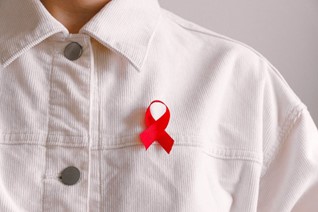Did you know that the first title for HIV was called the Gay-Related Immune Deficiency (GRID)? The HIV crisis spread like wildfire after the first cases started cropping up in June of 1981. It was clear to many who the disease predominantly affected and who the “blame” should be on. Colloquially, it was known as the “gay cancer” or the “gay plague” in many regions. The United States hospitals even adopted the homophobic term Wrath of God Syndrome (WOGS).
Homophobia was the main reason behind the absence of a proper diagnosis, testing, treatments, and prevention of HIV. It was the reason it turned into a crisis that affected 79.3 million people worldwide, with 36.3 million passing away. The LGTBQ+ community still mourns the deaths of many loved ones who died from HIV and AIDS, many in isolation from their new queer families.
In the beginning, it was basically a death sentence. Progress was slow when it came to researching the disease and preventing it due to the stigma and fear attached to it.
The History of HIV in the LGTBQ+ Community
The problem with the AIDS pandemic was that it persisted in communities that cis-het individuals preferred to ignore. In 1969, in St. Louis, a young man died of HIV right before the Stonewall riots. By the 1970s, the sexual revolution had started, and the HIV strain had made its way to North America through Haiti and Zaire.
The disease started silently spreading among gay men since it transmits more easily through anal sex. The reported cases started coming in during the early 1980s even though the disease persisted for a while now. The gay community was devastated. A lot of people from the queer community had to leave their blood family behind when they came out due to societal stigma and homophobia. And now, their close friends and loved ones from their new queer families passed away one after the other. Can you imagine what it was like to have 20 of your friends die in just a year? It was understandably an angering and frustrating situation.
The anti-LGTBQ movement started spreading too, which further enabled the HIV crisis since it discouraged many people from the queer community from even getting tested and treated for HIV. The fear of harassment, isolation, and stigma was real. The Kaiser Family Foundation Survey in 2014 found that 15% of bisexual and gay men received deplorable treatment due to their sexual orientation. 30% of the men didn’t feel comfortable discussing their sexual history with healthcare providers (who would with the WGOS phrase commonly used in hospitals?).
Underfunded HIV Research
The public health system did not have adequate funding to address the AIDS and HIV epidemic fully. The little funding that did exist was not targeted at the community that needed it the most: the LGTBQ+ community. For instance, too many people had HIV relying on the Ryan White Care Program, resulting in it being flat-funded.
State and federal programs were also negatively impacted by the policy decision that wasn’t based on science but rather on ideologies. For example, sex education programs that promoted failing abstinence-only policies were given $1 billion. In over 25 states, people with HIV could even be imprisoned if a partner claimed they hid their HIV status. There was no real proof that the laws even worked, but they did a lot to perpetuate the stigma and deter people from getting treated or tested for the disease.
Collective and Transgenerational Trauma from HIV
The AIDS pandemic left devastating consequences on the queer community that kept screaming loudly for any form of help to cope with the deaths of their loved ones. The irreversible damage to the families who had to care for the ill under their care without help from any resources and then dealing with their painful death was a lot.
In many cases, older generations cared for the dying and sick due to the AIDS and HIV pandemic. They provided psychological, social, and economic support and care for their loved ones while dealing with their personal loss.
The collective and transgenerational trauma of the young losing their queer role models while many mourned the loss of their young ones. Drag queens often “adopted” young gay men; losing their new children or new mothers was a heartbreaking trauma for many. Especially for people who had to run away from their blood families.
Final Thoughts
The HIV crisis resulted in the loss of many amazing queer people, activists, and role models. It really hindered the LGTBQ movement as well since many queer folks got the disease and passed away. The loss of friends and loved ones are still carried in the hearts of many queer individuals. Even with developments in HIV and AIDS concerning diagnosis, treatment, and testing, people are still fearful of the disease. There is a lot of misinformation when it comes to HIV, so it is important to learn more about it here.
Angelina Valentin, LCSW-R
Angelina offers counseling services and has worked with clients from all sorts of backgrounds. Angelina runs the Q Therapy Podcast and YouTube channel, welcoming clients of all sexualities, genders, race, and more.
